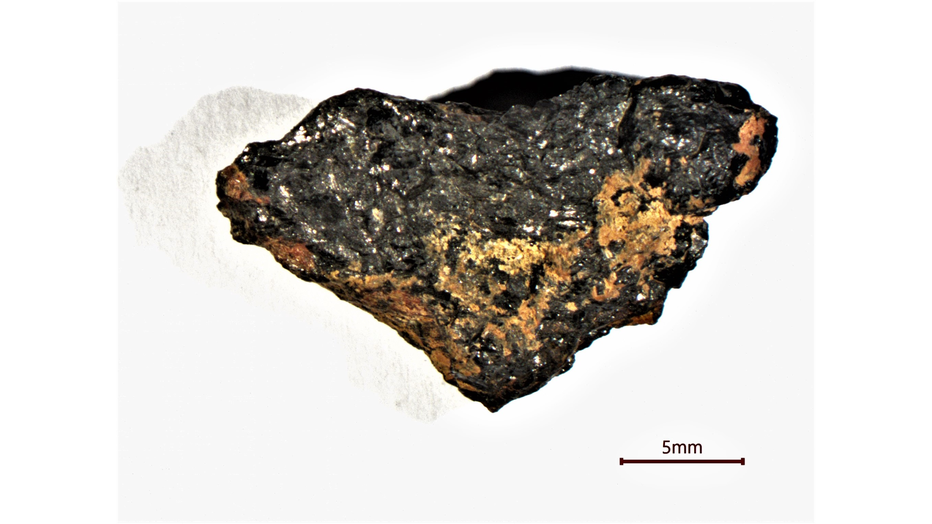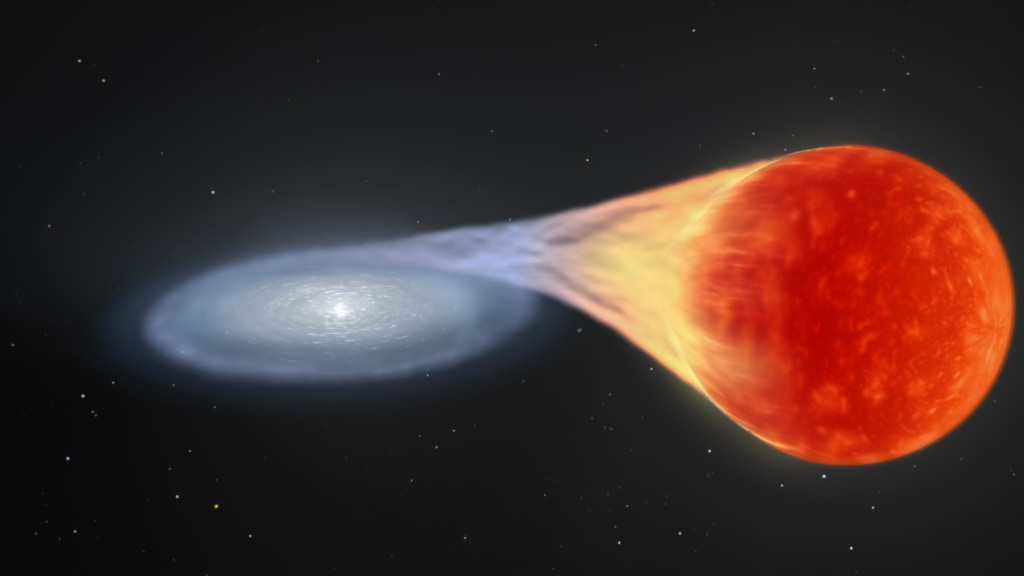This tiny space rock might be the 1st physical evidence of a rare supernova
The finding may have implications for existing theories about the solar system's origins.
A space rock discovered more than two decades ago may be the first physical evidence of a rare type of powerful stellar explosion called a Type Ia supernova, according to a new study.
In 1996, a researcher working in the Egyptian desert found a small pebble that scientists later determined was likely extraterrestrial in origin, as it comprised mysterious mineral compounds found nowhere else on Earth. In the new study, scientists at the University of Johannesburg in South Africa say they've found that this space rock — called the Hypatia stone after the ancient Greek philosopher and astronomer — might be the first physical evidence of a Type Ia supernova, one of the most energetic phenomena in the universe.
The team built on years of research, including studies from 2013, 2015 and 2018 that indicated that the stone did not originate on Earth, from a meteorite or comet, or from anywhere within the solar system, respectively.
Related: Why dead stars go boom: Scientists eye mechanism behind supernova explosions

In their new analysis of the Hypatia stone, the scientists used a proton beam, a high-energy particle accelerator, that identified 15 elements in greater detail than ever before. Using those clues, the team began to reverse engineer the places from which the stone could have originated, using the process of elimination.
For instance, the amount of silicon in the Hypatia stone was extremely low — less than 1% of what would be expected for an object that formed in our solar system. Likewise, the levels of chromium, manganese, iron, sulfur, copper and vanadium were not typical of inner solar system material.
"We found a consistent pattern of trace element abundances that is completely different from anything in the solar system, primitive or evolved," lead study author Jan Kramers, a geochemist at the University of Johannesburg, said in a statement. "Objects in the asteroid belt and meteors don't match this, either. So next, we looked outside the solar system."
Get the Space.com Newsletter
Breaking space news, the latest updates on rocket launches, skywatching events and more!
They kept changing their parameters to different possible origins, including interstellar bands of dust in the Milky Way, a red giant star and even a Type II supernova, which occurs when a massive star runs out of fuel, collapses, then explodes. However, the composition of the Hypatia stone ruled out each of these possibilities.

So the scientists investigated whether the origin could be a Type Ia supernova, an ultrapowerful explosion that occurs when a dense, dim stellar remnant called a white dwarf in a binary system explodes with such force that the white dwarf is reduced to atoms. Once those atoms congeal with dust from the white dwarf's nebula, the resulting rocky material would, theoretically, have a very specific chemical signature, the scientists said.
It turns out that the chemical signature of the Hypatia stone closely resembles the chemical signature that the scientists hypothesized for a Type Ia supernova. However, they weren't a 100% match.
"In six of the 15 elements, proportions were between 10 and 100 times higher than the ranges predicted by theoretical models for supernovas of type Ia," the scientists said in a statement. "These are the elements aluminum, phosphorus, chlorine, potassium, copper and zinc."
The researchers hope to explain those anomalous levels after conducting more analysis. In the meantime, they're enthusiastic about the prospect of the potential supernova evidence and what it could say about the origin of the solar system.
"Perhaps equally important, it shows that an individual anomalous 'parcel' of dust from outer space could actually be incorporated in the solar nebula that our solar system was formed from, without being fully mixed in," Kramers said. "This goes against the conventional view that dust which our solar system was formed from was thoroughly mixed."
The team's research is published in the August 2022 issue of the journal Icarus.
Follow Stefanie Waldek on Twitter @StefanieWaldek. Follow us on Twitter @Spacedotcom and on Facebook.
Join our Space Forums to keep talking space on the latest missions, night sky and more! And if you have a news tip, correction or comment, let us know at: community@space.com.

Space.com contributing writer Stefanie Waldek is a self-taught space nerd and aviation geek who is passionate about all things spaceflight and astronomy. With a background in travel and design journalism, as well as a Bachelor of Arts degree from New York University, she specializes in the budding space tourism industry and Earth-based astrotourism. In her free time, you can find her watching rocket launches or looking up at the stars, wondering what is out there. Learn more about her work at www.stefaniewaldek.com.









